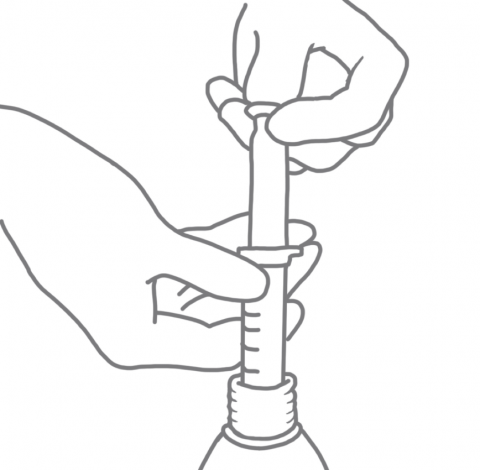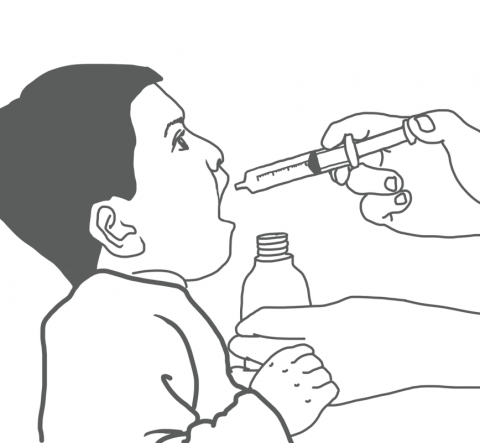
- Choose the correct syringe size.
- Draw the correct medicine dose by pulling back the plunger on the syringe. Always double check the liquid concentration (ie. mg/ mL) - it may be different from your last refill.
Follow the instructions below to correctly measure and give your child’s medicine.
It is important to correctly measure and give medicines to your child to prevent harm.



What is my child’s dose?
Your child will receive a “dose” of a medicine, typically in “mg”. For liquid medicines, the amount of liquid that you give to your child will depend on the concentration of the medicine. If the concentration changes, the amount of medicine to give will also change.
What do I do if I forget to give my child a dose of their medicine?
If within 4 hours, give the dose immediately. If it has been over four hours, skip that dose and give the next dose at the next scheduled time. If you forgot a dose used to treat an abnormal heart rhythm (including amiodarone, digoxin, disopyramide, flecainide, propranolol, or sotalol), give the next dose as soon as you remember and adjust the medicine schedule. If you’re unclear of what to do, call your doctor or pharmacist.
What do I do if my child took more medicine than they were supposed to?
Call your doctor or pharmacy right away for instructions.
What if my child spits up or vomits a dose of a medicine?
Only redose a medicine if your child has a large vomit right after getting their medicine, or you can see whole tablets or capsules in the vomit. If your child is receiving a medicine to treat an abnormal heart rhythm (including propranolol, amiodarone, flecainide, sotalol, digoxin, disopyramide), never redose the medicine.
Can I fill my child’s medicines at any pharmacy?
Some medicines may require a special pharmacy. Be sure to call your pharmacy 2-3 days before you run out of your child’s medicine to have your refills in time (especially around weekends).
What if my child refuses to take their medicines?
You can add a small amount of chocolate syrup, fruit punch, or formula to improve the taste of the medicine. Tablets such as aspirin may be crushed and sprinkled on applesauce, pudding, or yogurt. Always discuss options with your doctor, nurse, or pharmacist first.